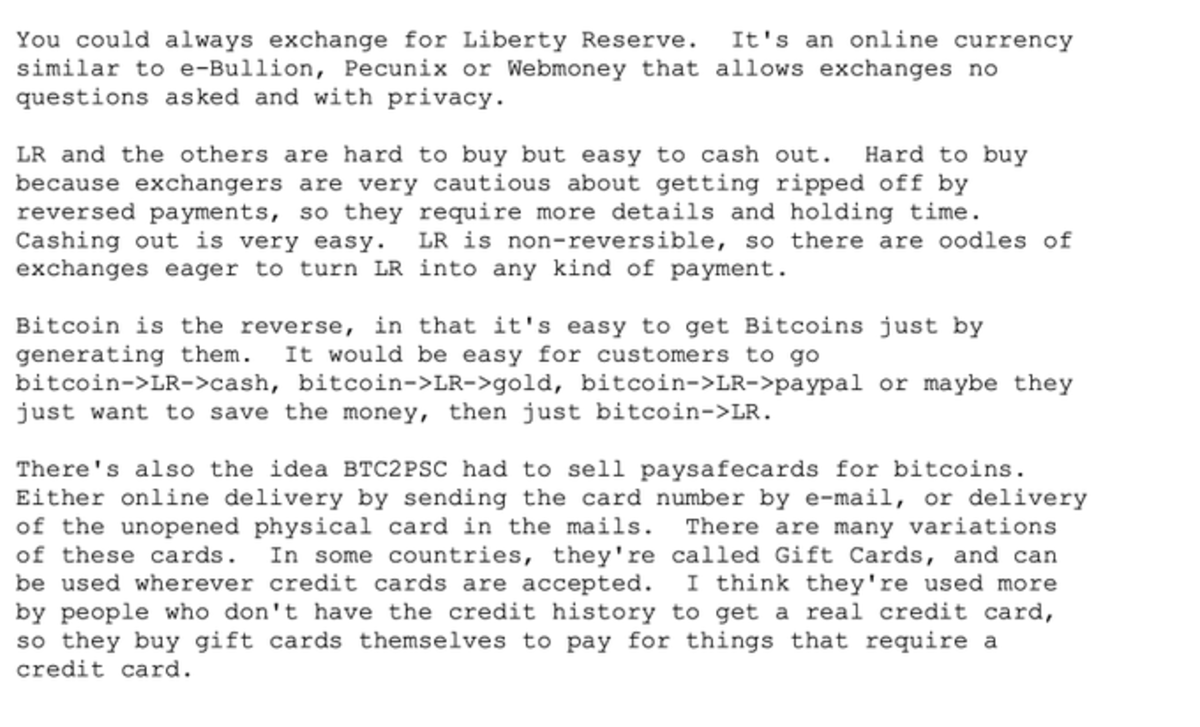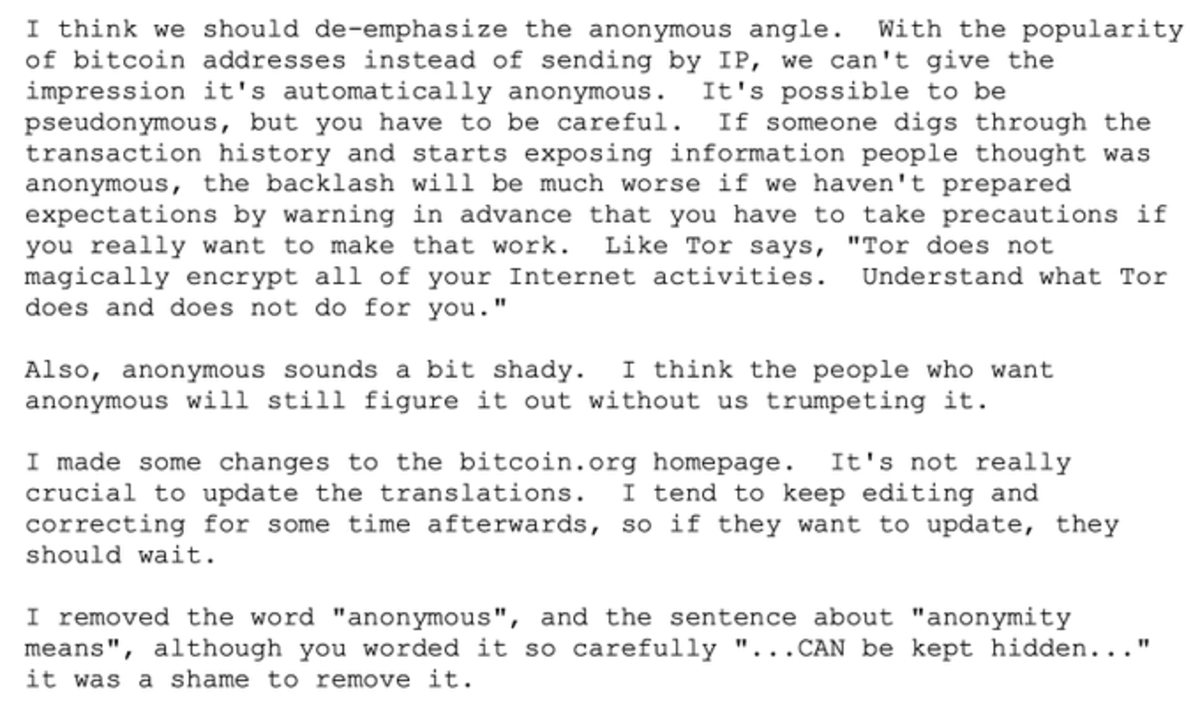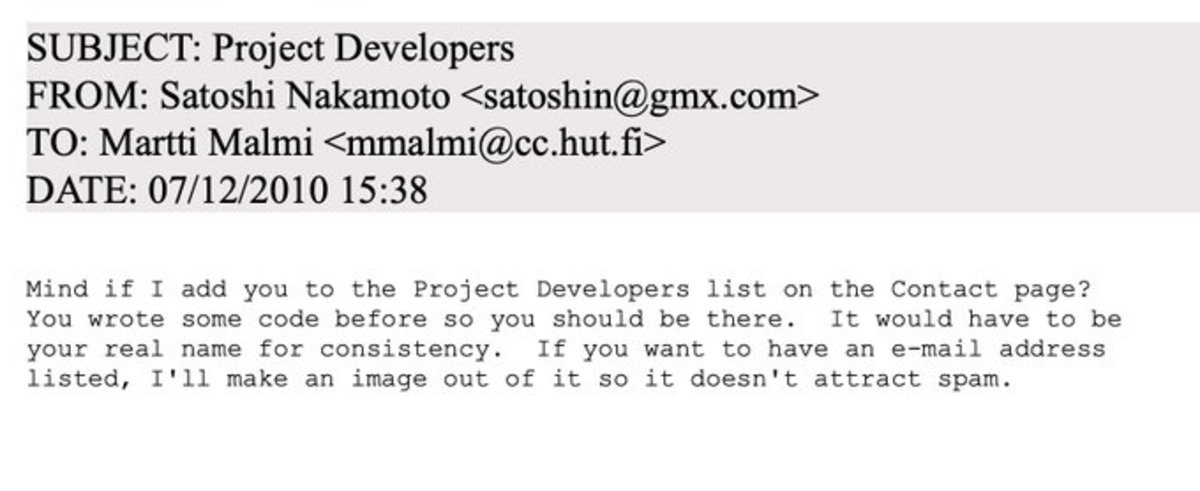Satoshi Nakamoto’s earliest collaborator Martii ‘Sirius’ Malmi has released his entire email correspondence with Bitcoin’s creator.
Spurred by an ongoing lawsuit in the U.K., the new emails are the most significant addition to the canon of what we know about Bitcoin’s still anonymous creator.
Here are the most important new findings.
EMAIL #1: SATOSHI’S BITCOIN SCALING ASSUMPTIONS
When asked how Bitcoin might scale in the future, Satoshi theorized the network might have a maximum of 100,000 nodes.
Here he goes into the calculations assessing the economics of bandwidth costs to nodes (read: miners) in propagating transactions across the network, the economic costs that would incur, and how that could be cost effectively passed on to users.
He also discusses the implementation of users paying fees, and hints at the potential for the fee necessary for confirmation of your transaction being market driven due to the processing capacity of the network.
All in all, it’s interesting napkin math, though nothing out of the ordinary for those who have read Satoshi’s full Bitcoin forum posts.
There Satoshi talked frequently about his vision for how the network might grow larger, and it’s notable much of his ideas were not proven to be viable based on subsequent development work.

EMAIL #2: Bitcoin Doesn’t Waste Energy
Though he wouldn’t stick around to see the tremendous uptick in Bitcoin mining using stranded resources, it turns out, Satoshi knew the network was greent.
One of the first criticisms to be lobbied at his new creation, Satoshi spent time addressing the idea that Bitcoin mining was wasteful on the forums, most notably saying that not having a currency like Bitcoin would be the bigger waste.
Here, however, he expands on the idea in more detail, and in a more vivid and descriptive way than we’ve seen before.

EMAIL #3: Satoshi on Time-stamping
A headed debated today remains whether Bitcoin is money, or whether it can or does have other ancillary uses.
In this email exchange, Satoshi seems to offer some insight on the debate, noting his belief the blockchain can be used as a distributed time-stamping server. This is akin to what has happened in Guatemala, where the blockchain has been used to certify contentious elections in recent years.

EMAIL #4: Satoshi Talks DigiCash
Satoshi describing the differences between #Bitcoin and DigiCash, David Chaum’s failed e-money.
This is notable as Chaum’s work had a profound impact on the cypherpunks, including Hal Finney. He specifically discusses the differences in privacy properties of the two models, and notes that unlike Chaum’s scheme did not support an offline model, requiring all participants to be online to make use of the system.
He also explains the finite supply cap of bitcoin.

EMAIL #5: Satoshi Was Concerned About Promoting Bitcoin
Satoshi was concerned about his legal risk in launching #Bitcoin, noting he was “uncomfortable” with explicitly labeling it an investment.
Note: Here also we see he didn’t come up with the term “cryptocurrency” himself.

EMAIL #6: Satoshi Got Burned Out on Bitcoin
By July 2009, Satoshi was tired, saying he “needed a break” from Bitcoin. Here, he also explains Hal’s absence from the work. He also mentions spending a period of 18 months at that point developing Bitcoin.
A curious note as well, he asks Malmi if he had any ideas for applications people can actually use Bitcoin for.

EMAIL #7: Bitcoin, A Way to Get Free Money
Satoshi discussing how #Bitcoin might gain adoption. Of note is his emphasis that Bitcoin was easy to obtain given that you could mine it on a computer. He also goes to postulate how the nature of a market trading for Bitcoin would evolve, discussing how skeptical people might be of its value, stating he was confident the increasing mining difficulty would prove its scarcity to people.
Very different from how we think about BTC today in terms of acquiring it, but demonstrating a prescience of how people would mentally value it in the future.

EMAIL #8: A Mysterious Bitcoin Donor Emerges
In June 2010, someone offered to donate $2,000 to Satoshi for his #Bitcoin work. Notably, he had the donor send it to Martti’s address. He also communicated care that the donor’s privacy was respected.

EMAIL #9: Satoshi Was a Fan of Free Transactions
Already known, but Satoshi was pretty adamant that early users consider #Bitcoin “free.” Here he is discussing removing transaction fees from the UX of an early software.
It’s interesting that his reasoning was to obscure this feature from users, but simultaneously acknowledged its necessity in the far future.

EMAIL #10: Satoshi Was Dedicated to His Bitcoin Work
Satoshi worked on #Bitcoin on Christmas day. There are some interesting implications here to consider regarding his personal life.

EMAIL #11: Bitcoin, A Web Currency for Currency Trading?
Satoshi saw #Bitcoin taking hold as a way to trade other internet currencies like Liberty Reserve. He also goes on to discuss the potential for markets selling gift cards for bitcoin, which wound up becoming and is to this day a significant market for bitcoin.
Note: Liberty Reserve was later shut down by the US.

EMAIL #12: Satoshi’s First Disappearance
Satoshi had a mysterious leave of absence from #Bitcoin in 2010. Here he is talking about it with Martti, though it’s notably also short on details.

EMAIL #13: Satoshi Realized Bitcoin Wasn’t Anonymous
It was Satoshi who removed the language that Bitcoin was “anonymous” from http://Bitcoin.org. He worried it made Bitcoin sound “shady.” This echoes his later sentiments around Wikileaks announcing their acceptance of bitcoin for donations.

EMAIL #14: Satoshi Gives Praise to His Protege
Worth noting given the historical revisionism around this, Satoshi thought very highly of Gavin Andresen. Here he is praising Gavin and referring to someone else as a “goofball.”

EMAIL #15: Satoshi Says Sayonara
We finally have a copy of the email Satoshi sent other developers before taking his name off the project website. As they’ve said, Satoshi doesn’t mention his intention to step back from the project at all.

Overall no substantial new information is brought to light, but the emails do give a new angle to Satoshi’s interactions with others involved in the project before his departure.